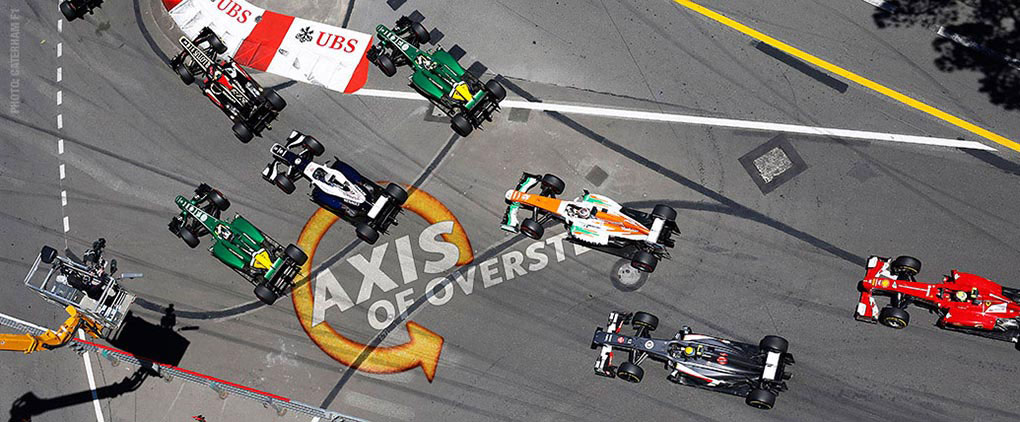 |
| Ferrari Power Unit |
Just a day after the presentation of the F14-T and there is news both Mercedes and Renault are raising objections to the way Ferrari has chosen to interpret the 2014 regulations.
At the heart of the matter is article 5.18.5 of the
2014 F1 Technical regulations which states :
5.18.5 Measures must be taken to ensure that in the event of failure of the turbine wheel any resulting significant debris is contained within the car.
 |
| Mercedes: note MGU-H in the middle of the turbines |
Renault and Mercedes have addressed this by constructing a casing mounted around the turbo, as part of the engine. As
Auto Motor ind Sport explain, this means it they have a ballistic shield covering the turbo which can weigh, our sources tell us, as much as 5 kg. That is an enormity in F1 especially considering where it is located, high on top of the engine.
 |
| Renault and Ferrari have the MGU-H in the "V" |
What is Ferrari doing differently? Here it gets murky but logic would dictate Ferrari would not simply ignore a regulation but made a ballistic cover incorporated into the bodywork. The advantage in this interpretation and what must worry competitors if it's the route chosen at Maranello, is that this extra weight will not count towards the 145 kg minimum engine weight. Why is this crucial? All manufacturers have been struggling to meet that minimum weight and it's easy to see why they would rather have extra mass to reinforce critical engine parts rather than be used for a heavy prophylactic shield.
Of course, one wonders, how did Renault and Mercedes know how Ferrari was packaging the F14-T before it was even presented?
(with
Filippo Zanier/ItaliaRacing.net)
UPDATE
the FIA has issued clarifications on both Lotus' fork nose and Ferrari's turbo. Both are legal. Ferrari's argument was that the particular construction of the turbo they use meets the regulation's requirements.




GET BOND IN HERE NOW! It is always interesting how they find stuff out. I have to assume that Ferrari is doing something strange enough if other teams are posing an issue. Everyone in F1 is smart ... so I would like to think they didn't over look this option and then start crying once Ferrari figured it out. Then again, it is F1 and while crying may not be allowed in baseball, it is in F1.
ReplyDeleteSo, I'm sitting here scratching my head a little bit...wouldn't the issue be 'maximum' engine weight? If Ferrari has gone and put the 'shield' on another system (bodywork) that would allow them to bulk up other internals with the ~10.4 lbs that Merc/Renault has had to place into the shield. In which case I can see the frustration, since the others would have had to skimp in areas they'd rather have a bit of room to work with via thicker components - like cylinder walls and such.
ReplyDeleteIf we're talking about reaching a 'minimum' engine weight, well, having a valid reason to slap 11lbs of otherwise pointless mass on top of the block would be a help (outside of the poor placement of that mass, as you stated). From a design standpoint, it's much harder to lose weight than it is to find it, thus 'maximum' and 'minimum' are two wholly different targets...
did I write maximum?... my bad.
ReplyDeletewell no, it's minimum, assume everyone wants the lightest engine possible (if they could they would use "unobtanium" alloys etc.). but this year it has been tough to get down to that 145 kg figure, so its quite a penalty to have to devote extra mass to a shield, especially one high up on the engine.
ReplyDeleteSorry, it's just the way you phrased it 'struggling to meet the minimum weight' implies that they've somehow had trouble leaving meat on the bone, so to speak. Of course they all want the lightest engine possible - and any extra weight they can trim from components can be re-positioned at a lower point in the block for lower COG, like ballast to meet minimum overall weight. But if the Scuderia has placed that weight in the bodywork - positioned even higher than the engine - then the question remains, unless they've managed to incorporate the shielding into the composite work with kevlar or some other exotic stranded material. I suppose that could provide the same protection in a lighter package since layered composites are (theoretically) much stronger per 'mass unit' than forged or machined metals in this application.
ReplyDeleteSome other interesting items floating around out there, I suspect this will be a season full of technical challenges (literally and legally). I can't wait for round 1 ;D
So whats inside The "V" on the Mercedes? Nothing?
ReplyDelete